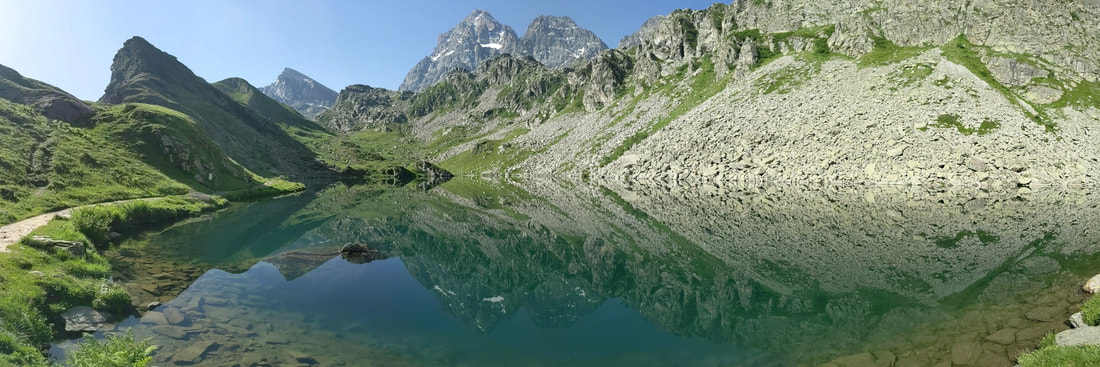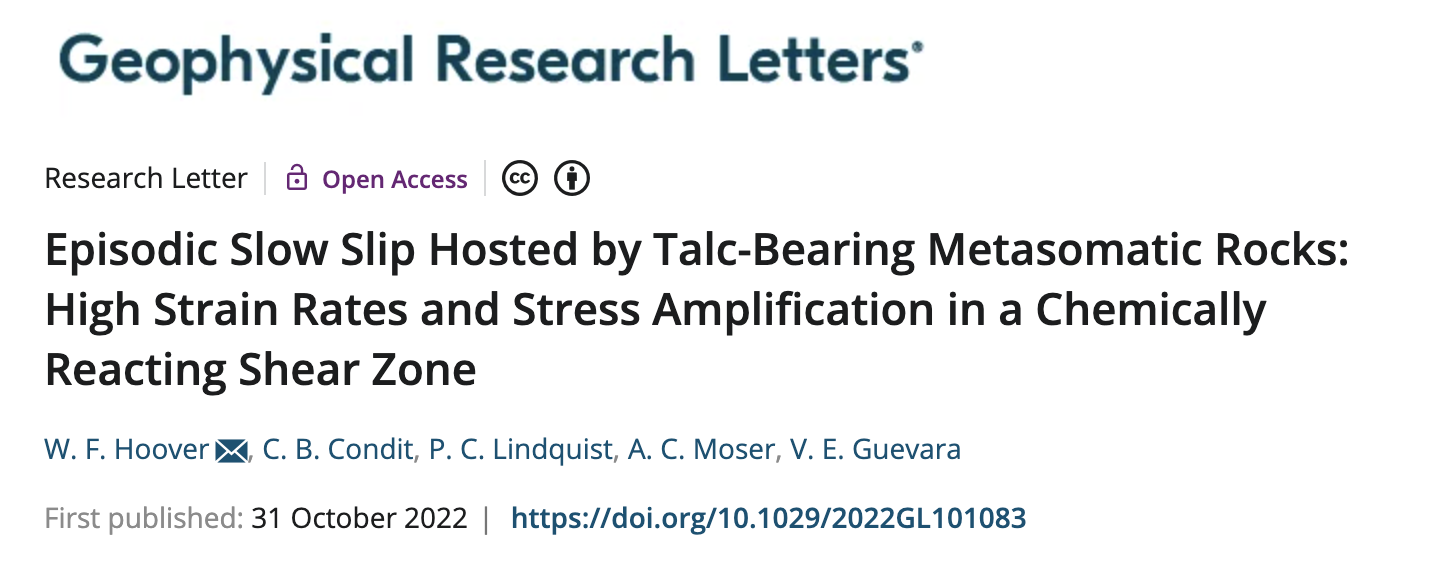News
|
PI Hoover was awarded an NSF Grant for $395k to investigate feedbacks between deformation and fluid movement in subduction zones using exhumed rocks in the Italian Alps.
|
Eos Highlight on a new paper first-authored by mentee and UW grad student Peter Lindquist using thermodynamic models to constrain the formation of talc in modern subduction zones.
|
|
Check out my recent talk on evidence for episodic seismic events in chemically-reacting rocks at Central Washington University that was lived streamed on YouTube
|
New paper out in Geophysical Research Letters showing evidence for episodic seismic events hosted by chemically-reacting rocks from the subduction interface
|
|
William F. Hoover, PhD
NSF EAR Postdoctoral Fellow Department of Earth and Space Sciences University of Washington |
My Research
My research focuses on the relationship between fluids and seismic hazards and the of behavior and transport of fluids in subduction zones. I investigate how fluids move in subduction zones, their feedbacks with seismicity and deformation, and the timescales of fluid transport and deformation. I combine petrologic, geochemical and structural methods applied to exhumed paleo-subduction terranes in the Alps, Southern California and beyond.
Seismic hazardsFluid movement as a cause and consequence of seismicity
|
Fluid transport networksFluid sources and transport pathways in subduction zones
|
Diffusion chronometryResolving timescales in the rock record comparable to active subduction monitoring
|
I am currently working and living on unceded lands of the Coast Salish peoples that touch the shared waters of the Duwamish, Puyallup, Suquamish, Tulalip, and Muckleshoot. Much of my research has been carried out on lands of the Tongva, Diné, and Piscataway peoples. I respectfully and humbly thank the Coast Salish, Tongva, Diné, and Piscataway ancestors, elders, and citizens for their ongoing stewardship of these lands and affirm their sovereignty in the face of continued dispossession and settler-colonialism
Contact
|







